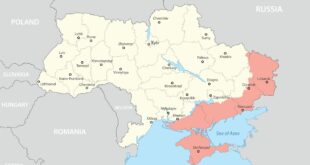Shehab Al-Makahleh
Russian recent initiative to mediate between Iran and Saudi Arabia has come as a surprise and has left many queries about what Moscow could do in order to bridge the gap between Tehran and Riyadh. The Middle East is in a process of a geopolitical makeover that can affect it for decades to come, paving the way for the establishment of a new political and security system. Russian President Vladimir Putin has become the de facto leader in the region and has managed, in a short time since 2015, to fill the vacuum created by America’s gradual withdrawal that has come as a result of decreasing dependence on Middle East crude and increased reliance on US shale oil reserves.
America’s traditional allies in the Middle East, such as Saudi Arabia, the United Arab Emirates, Turkey and Jordan, are showing an interest in strengthening military and economic ties with Moscow. A recent visit by Saudi King Salman bin Abdulaziz at the head of a large delegation seems to suggest that Riyadh is convinced that the surest way to a stable Middle East lies through Russia. Though the visit of the Saudi monarch has not resulted in billion-dollar deals, it is nevertheless considered as a first real step toward a strategic alliance between the two largest oil producers in the world. Many believe that it plays in Russia’s favor to start a fresh game of chess in the Middle East, with new players.
SQUARING ALLIANCES
Since the start of 2017, Russia has been forging an alliance with Iran and Turkey. This is the most important and prominent power triangle in the region, one that maps a new reality and marks a beginning of the end of US supremacy. American leadership is losing its clout in the Middle East and has lost its credibility, according to both Arab officials and as demonstrated by a recent opinion poll.
The memorandum of understanding on the purchase of S-400 air defense missiles signed between Moscow and Riyadh, followed by the American consent to sell 44 Terminal High Altitude Area Defense (THAAD) launchers and 360 missiles worth $15 billion to Saudi Arabia, reflects that the Middle Easterners are starting to move to a new Mecca — Moscow — as a major political and military player in the region. Russia has succeeded in persuading former US allies to reshuffle in their stance toward Moscow as an integral broker. For instance, Russian medics were flown in to conduct a critical surgery on former Yemeni president, Ali Abdullah Saleh, for wounds he sustained during the 2011 assassination attempt; Russian political experts frequently visit Yemen to make diplomatic inroads.
Putin wants to add another side — Saudi Arabia — to the triangle, for it to become a square. This new configuration of alliances cannot be completed without mending Saudi-Iranian relations and removing all underlying tension to help this alliance be fruitful and successful.
Russian Deputy Foreign Minister Mikhail Bogdanov expressed his country’s readiness to mediate between Iran and Saudi Arabia to normalize bilateral relations. “We have tried several times in the past to bring the two countries together; our attempts have not been successful,” he said. It is unlikely that this statement by a Russian official could have been aired without a green light from the Saudis, delegating to Moscow to set up an initiative to bring the two historic antagonists to the conference table.
It is in the interests of both Riyadh and Tehran to normalize relations, albeit at minimal levels, and to defuse tension in the numerous hotspots across the region, starting from Syria, Iraq, Bahrain and Yemen. This would mean the Russians being given a green light to intervene in the war in Yemen as they have a neutral position toward the warring sides. With the Syrian war coming to an end, the Russians have proven more reliable to the Arabs as they supported the Syrian government in regaining most of the regions under the control of the armed opposition and the so-called Islamic State.
THE COMING ERA
Today, Iran is in a state of cold war with the White House administration and mainly with President Donald Trump, leaving the whole Middle East region, and especially the Gulf, anticipating the worst-case scenario. In defiance of Trump’s incendiary speech at the UN General Assembly in September and his threat to scrap the Iran nuclear deal, the Islamic Revolutionary Guard Corps (IRGC) vowed to expand the country’s ballistic missile capability regardless of the American threats or any slated sanctions against Tehran.
On the other hand, Saudi Arabia is engaged in a bloody war in Yemen, where the financial and human costs are high and a militarily solution is not in sight. Iran is the most prominent supporter of the Houthi rebels, who oppose Saudi-backed government of Abdrabbuh Mansur Hadi. The UN Special envoy to Yemen, Ismail Ould Cheikh, paid a visit to Tehran recently to hold talks with its leaders regarding the conflict in coordination with the Arab coalition, including Saudi Arabia and the United Arab Emirates. The Yemen Civil War is the biggest impasse for Saudi Arabia, and the lifeline may be presented by Moscow and its strong relationship with Iran and other warring parties.
Saudi Arabia expected a swift and victorious war to bring the whole Yemen under Hadi’s rule within a few months. It has failed in its mission, suffering military losses and precipitating a devastating humanitarian crisis. The failure of the Saudi forces is attributed mainly to the nature of the war that is being waged between the regular military and militia forces supported by other countries. The Saudis are providing Hadi’s forces with weapons, while Tehran is propping up pro-Iran Houthis, as well as Salah’s forces, with arms as well. This proxy war has led to a rift between Tehran and Riyadh not just over the situation in Yemen but also other countries in the region, such as Syria and Iraq, where Saudi Arabia and Iran are playing political games.
Saudi leadership has been conducting important reviews of its policies and positions in the past three years due to its disappointment with the Americans on more than one level. The most recent dispute with Qatar affected Saudi foreign policy, prompting the Saudi monarch to visit Moscow early in October to evaluate Russia’s stance.
In the summer of 2016, Iraqi Shia leader Muqtada al-Sadr visited Jeddah in an attempt to mediate between Iran and Saudi Arabia. Sadr’s visit to Jordan and his meeting with King Abdullah II on October 23 emphasizes that Iraq is drawing closer to the Hashemite Kingdom, who was the first to warn against the “Shia crescent” from Tehran to Beirut. On the other hand, the visit of Iraqi Prime Minister Haidar al-Abadi to Saudi Arabia is in line with seeking Iraqi mediation to end the rift with Iran. No one has an answer as to where the Middle East is heading, but many in the region are seeking new alliances and rethinking foreign policies in order to survive the coming era.
Source: Fair Observer
 Geostrategic Media Political Commentary, Analysis, Security, Defense
Geostrategic Media Political Commentary, Analysis, Security, Defense





